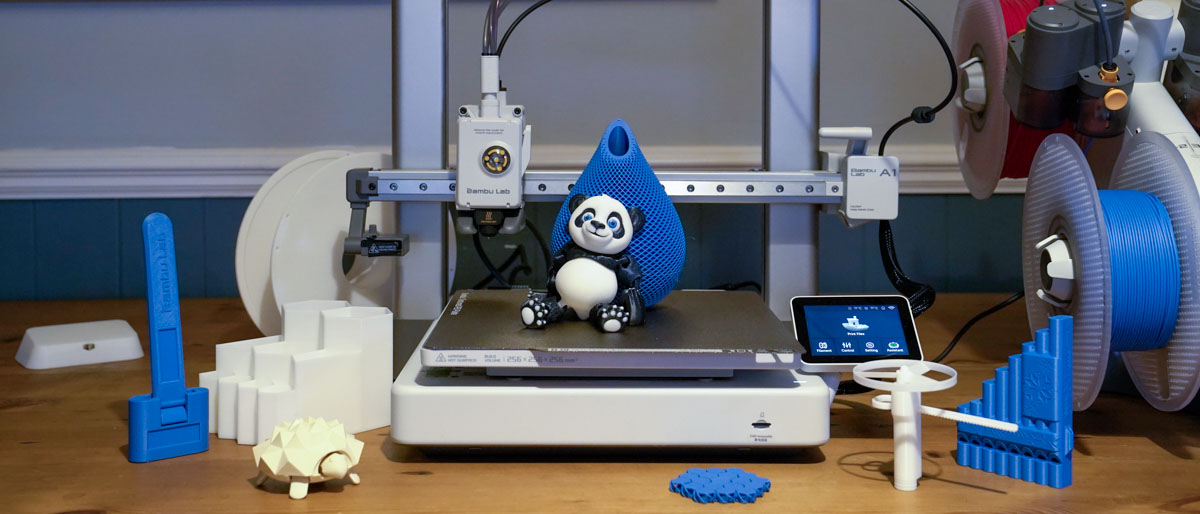
Bambu Labs has built a reputation as a disruptor in the 3D print world. Their Core XY machines arrived on the scene with speeds and accuracy that were hard to beat; if the speed and accuracy weren't enough, the AMS multi-filament system took the machines to another level.
A short while ago, we saw a departure from their Core XY machines with the arrival of the Bambu Labs A1 Mini, one of the best 3D printers we've reviewed. It boasted a speed and accuracy that was hard to beat, only matched by the recent updates to the excellent Official Prusa Mini.
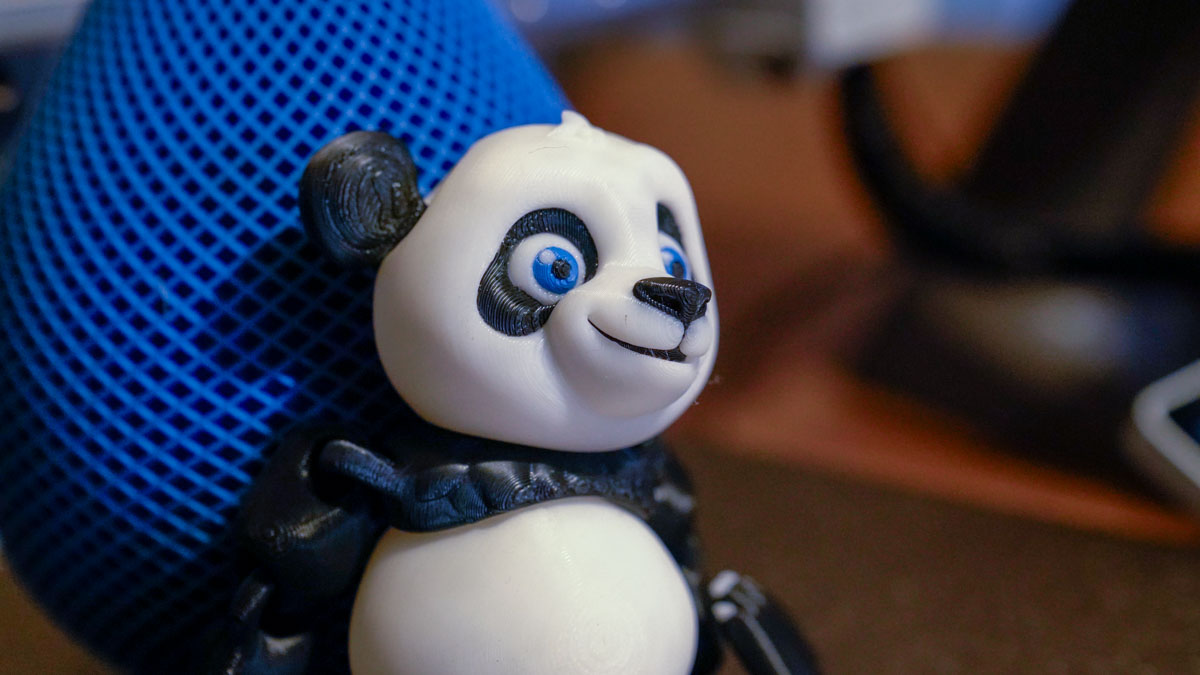
Now, the Bambu Labs A1 Mini has arrived and is available as either a single filament machine or, once again, sold as a combo that includes the AMS Lite. While that system does take up quite a bit of desk space, it's nothing compared with some other systems that are emerging, but what really makes it stand out is the simplicity.
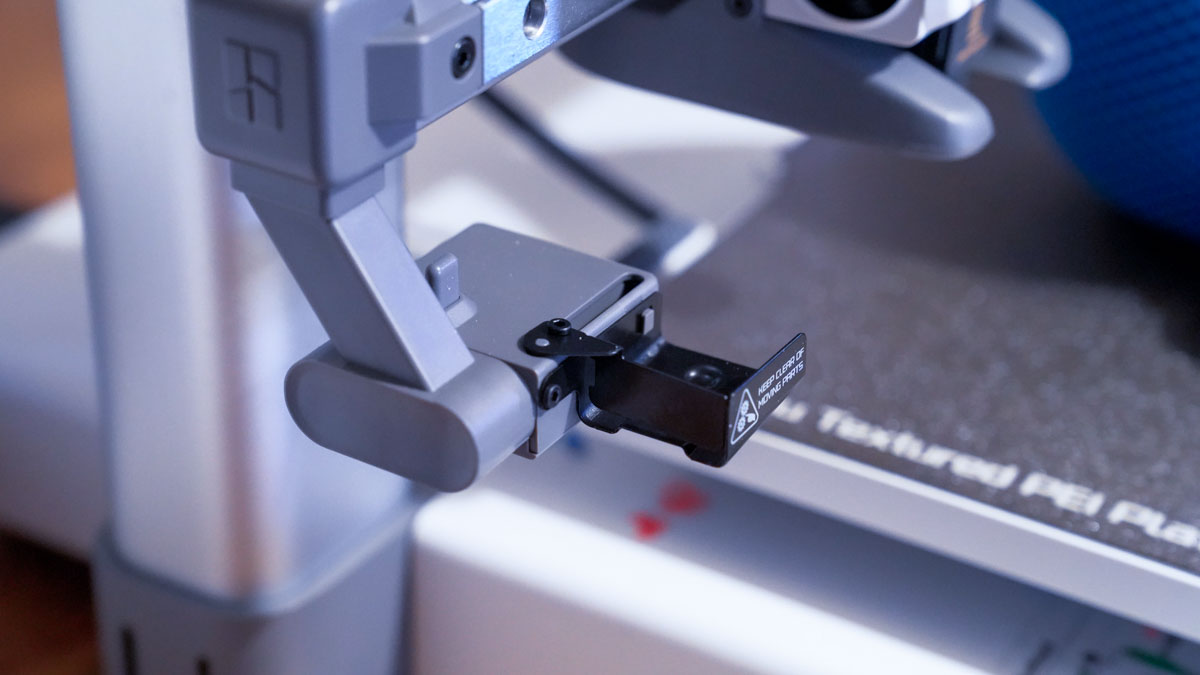
The setup is straightforward, and in true Bambu style, an alternative AMS Lite mount was sent through as a print file, just in case I want to pop the AMS system on top of the printer rather than on the desk to the side. After trying both, my personal preference is for the AMS to sit next to, not on top of, the machine, but there's that option. That flexibility is another big feature of the Bambu Labs kit. Like the P1P, there's the ability to adapt.
Once again, Bambu has done what they have built a name around: listening and innovating, and the A1, from the outset, looks set to impress.
Bambu Labs A1: Design
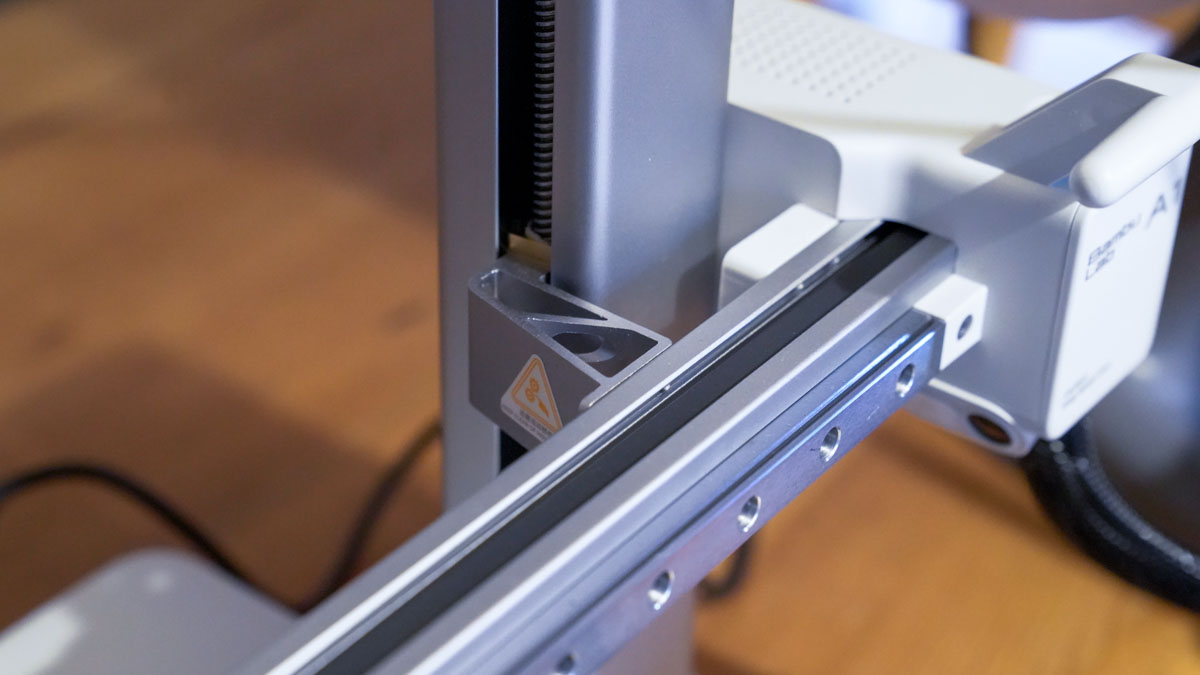
Print Technology: Fused Filament Fabrication (FFF)
Build Area: 256 x 256 x 256 mm³
Minimum Layer Resolution:
Maximum Layer Resolution:
Dimensions: 386 x 389 x 458 mm
Weight: 9.65 kg
Bed: up to 80ºC
Print Surface: Textured
Software: Bambu Studio (Supports third-party software)
Materials: PLA, ABS, PETG, ASA, etc.
Print Speed: Up to 500 mm/s, with top acceleration at 10000 mm/s²
Bambu Labs doesn't so much break the mould as rework it, and that's exactly what has happened with the A1. On the surface, a cursory first look would highlight the typical Cartesian design, nothing out of the ordinary aside from the very slick-looking LCD touchscreen and beautifully designed tool head.
As is now common with these printers, the A1 comes almost completely assembled, so it's just a few screws and wires plugged in, and you'll be up and running. The setup process took less than half an hour, and there's really nothing that would confuse the entire process. I also liked the fact that the manual is a little more specific about the printer position during the setup process, giving you tips about using a table to ensure easy mounting of the vertical section.
While you get to see some of the construction as you bolt in the verticle, it's only when you start to look closer that you start to see the Bambu in the design. Details such as the horizontal bar that features an intricate metal mount that attaches to the vertical, and then there's the base, which is that slight futuristic off-white that we saw used on the A1 Mini and AMS lite. The overall finish, although familiar in design, looks futuristic.
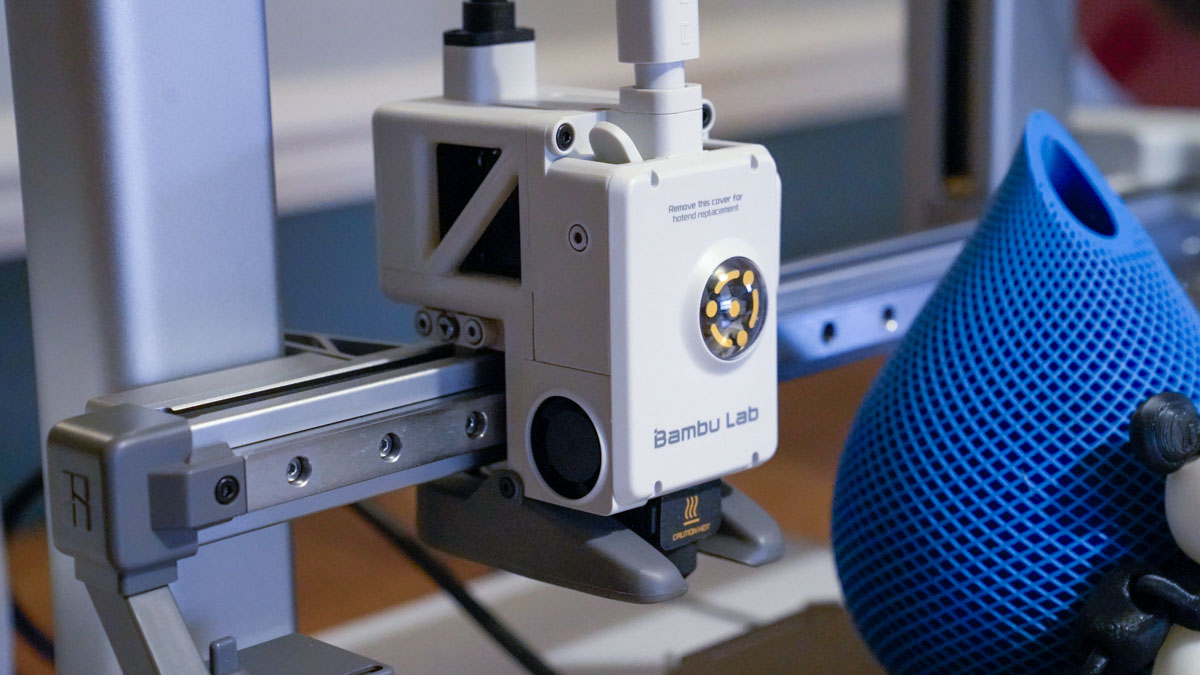
Even the single filament reel holder and filament run-out sensor have something of the future about them. Then there's the slightly crazy AMS Lite design with the four reels mounted two aside. This design is inspired as the reels are clearly labelled, and when it comes to printing, it's incredibly easy to allocate filaments to the different parts of the model if you've set that up in the software.
As with the A1 Mini, the AMS Lite sits to the side, although there is the option to top mount this with a 3D printed part if you want. This means that if you do go multi-filament, then it takes up a little extra room on the desktop, but it is worth it for this printer's abilities.
One point on the design. What is well worth going into is the fast switch nozzles; these literally release and enable you to insert new or alternative nozzles, with the system recognising them as soon as they're inserted.
When it comes to the design, the machine looks outwardly simple, but look closely, and the quality and details are well beyond that of many printers that are around the same price or only marginally cheaper.
Bambu Labs A1: Features
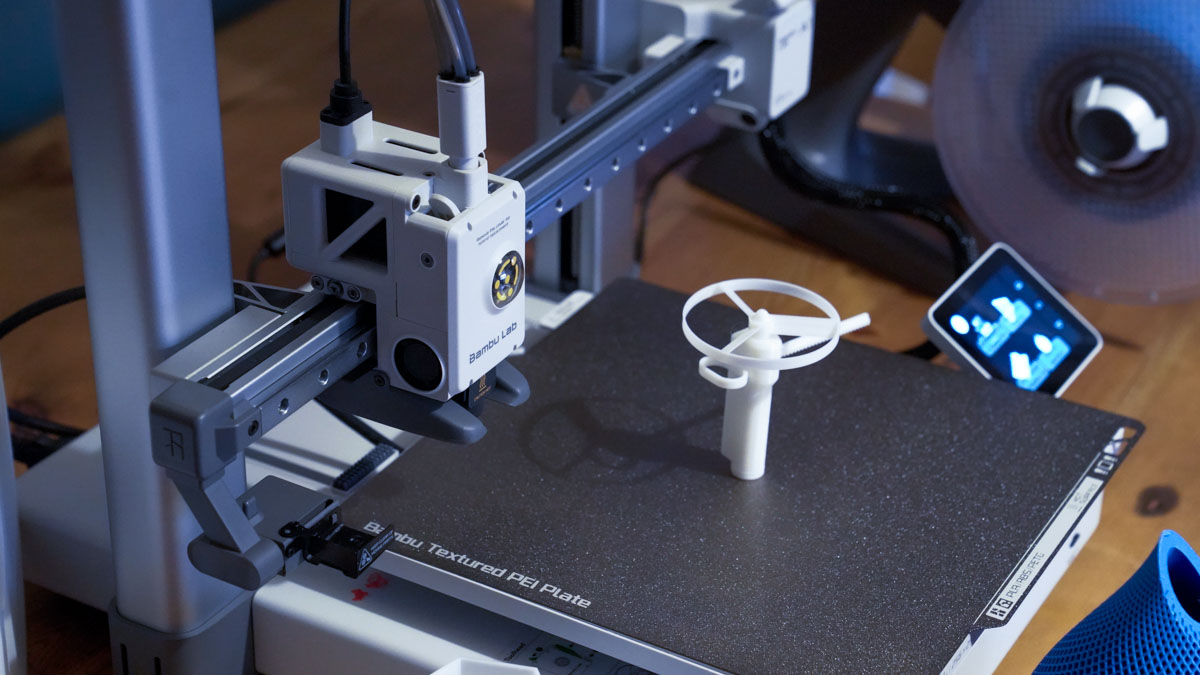
Positioned as a user-friendly, entry-level device, the Bambu Lab A1 integrates several innovative features. Key highlights include its intuitive 3.5-inch IPS touchscreen, offering a smartphone-like user experience, and the Health Management System (HMS), which's for the machine, not you, that assists through all operational steps and troubleshooting.
The printer, if brought as the combo, features the AMS Lite system for multi-material printing, supporting up to four colours. Bambu Lab's machines are known for speed, and here, the A1 offers a top printing rate of 500mm/s and a 10000 mm/s² acceleration, made possible by performing vibration calibration for both X and Y axes at each print's start. This calibration accounts for the printer's tension and environmental temperature, enhancing accuracy. There is the option to skip this when you load files, but for the couple of minutes that it takes, it's worth leaving it to do its thing.
Additionally, the Eddy Current sensor in the hotend actively compensates the extrusion flow rate, ensuring stable extrusion throughout the printing process; as the machine primes, you can see this system suck in and out the filament as it measures the properties before starting the print.
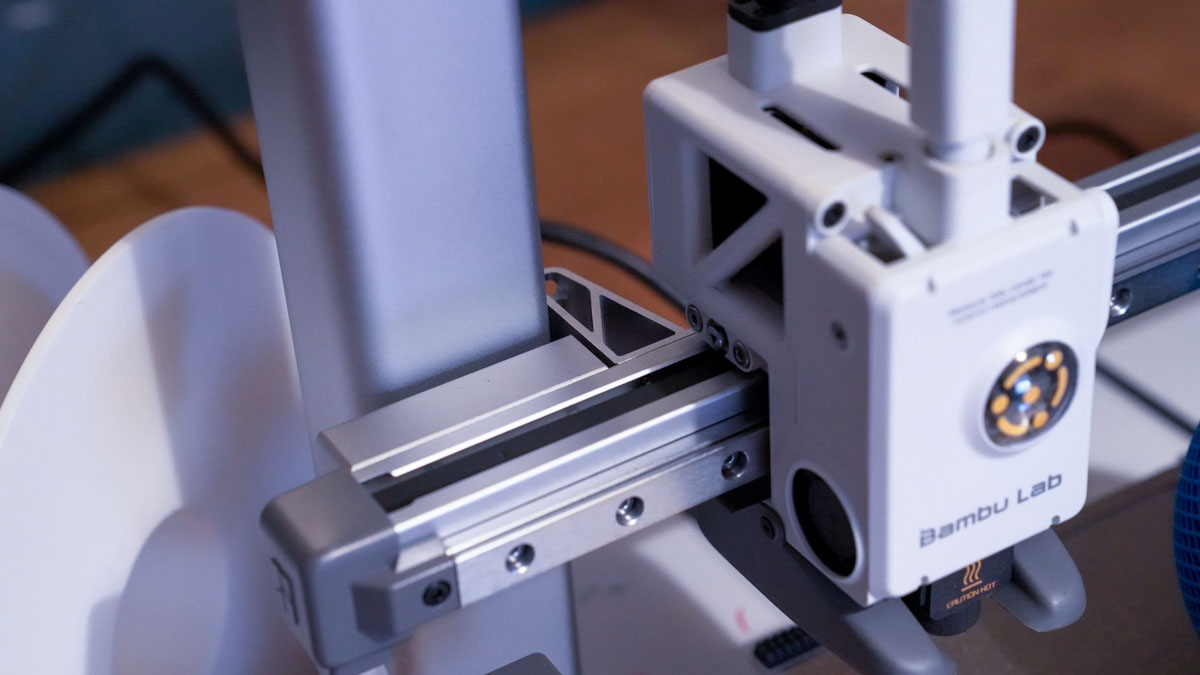
The A1's design features all-metal rails and linear bearings for extra rigidity and accuracy, with minimal maintenance requirements. Its advanced filament monitoring system goes beyond filament presence detection, measuring various aspects like filament speed, tension, and pressure.
The HMS system can pause prints upon detecting problems and aids diagnosis, such as giving you some suggestions as to what has gone amiss.
One of the big features is the Quick Swap Hotends for easy maintenance and swapping for different diameter nozzles. It's all very user-friendly, but at the same time, there's a lot here for a beginner to get to grips with.
Bambu Labs A1: Performance

Dimensional accuracy - score of 5
Target 25 = X: 24.90mm / 0.10mm Error | Y: 24.83mm / 0.17mm Error
Target 20 = X: 19.94mm / 0.06mm Error | Y: 19.85mm / 0.15mm Error
Target 15 = X: 14.92mm / 0.08mm Error | Y: 14.91mm / 0.09mm Error
Target 10 = X: 9.92mm / 0.08mm Error | Y: 9.88mm / 0.12mm Error
Target 5 = X: 4.95mm / 0.05mm Error | Y: 4.91xmm / 0.09mm Error
X Error Average = 0.074mm
Y Error Average = 0.124mm
X&Y Error Average = 0.099mm
Fine Flow Control - score of 5
Fine Negative Features - score of 5
Overhangs - score of 4
Bridging - score of 5
XY resonance - score of 2.5
Z-axis alignment - score of 2.5
Adding up the totals gives a final score of 29 out of 30.
The Bambu Labs A1's print quality test results reveal its high accuracy in precision and detailing, with an overall score of 29 out of 30. The dimensional accuracy score of 5, with X and Y error averages of 0.074mm and 0.124mm, respectively, indicates exceptional precision in reproducing model dimensions. This makes it ideal for applications requiring fine details and accuracy; ensuring you have a good support material in place will enable you to print highly detailed models that are closer to what you could expect to print with a resin printer.
The printer excels in fine flow control and fine negative features, both scoring 5, demonstrating its ability to handle intricate details and complex geometries. It also performs well in bridging (score of 5) and overhangs (score of 4), further emphasising its capability to print challenging designs.
Overall, these results position the A1 as a versatile printer suitable for a range of applications, from detailed models to robust prototypes.
Bambu Labs A1: Verdict

The Bambu Labs A1 3D printer is a notable entrant in the 3D printing arena, presenting itself as a disruptor. Known for their Core XY machines, Bambu Labs' A1 Mini was a departure from the company's usual style of machine as far as it was a compact bed slinger; however, the speed, while not Core XY, was still beyond anything else at the time, now the A1 with it's larger build area and more robust build is set to take on the middle ground.
The A1, available as a single or multi-filament machine with the AMS Lite, stands out for its simplicity and versatility. The A1's design is both futuristic and practical, offering a fast-switch nozzle system and a user-friendly experience.
However, if you're a beginner, while this is a great machine and really difficult to fault, the complexity beneath the surface can require some knowledge, and the software, even in its simplest form, can take some getting used to.
OK, so the A1 offers more than anything else in its class and takes on the best of the Cartesian, including the Original Prusa MK4, but is this all too much? It's rare to say, but for the price, I feel it's just too cheap and doesn't leave any room at the lower and now mid-range of the market. The A1 takes a tried and tested design and essentially turbo charges it so that there really is little to fault, as was seen by the print quality. My only reservation is the open design, which restricts where it can be used.
- Best 3D modeling software: Testing tools for bringing creations to life







